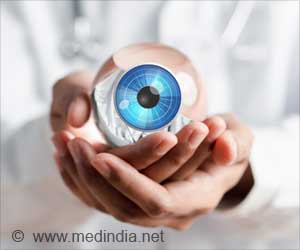Public healthcare too is turning to IT to provide better services to the people in India. Leading IT institutions are being roped in for the purpose.
Delhi Municipal Corporation (DMC), in association with Wipro, is implementing Hospital Information System (HIS) in the six hospitals managed by it in the national capital."The solution is an integrated system which allows relevant information to be readily accessed from various departments," says Dr Seema Gupta, Domain Consultant, Wipro HealthCare IT. Her firm is providing 28 different modules, which cater to the needs of outpatient and inpatient departments.
An Electronic Patient Folder with details of each visit would be available at all of these locations once the implementation is done at all six hospitals. This will enable the doctors to have ready access to past episodes and information of the patient, thus ensuring efficient patient care.
Dr Sumanth Raman, Advisor, Lifescience & Healthcare Practice, TCS said his company was working on a system for Tamil Nadu. It should start functioning in all the 26 district headquarters hospitals, 162 taluka hospitals and 77 non-taluka hospitals and some of the Primary Health Centres (PHCs) managed by the Government.
"IT is employed in medical college hospitals in Tamil Nadu to manage in-patient and out-patient details, medical records, office automation, lab and pharma services," says Dr TP Kalanidi, Director of Medical Education, Government of Tamil Nadu. HMS manages Madras Medical College and medical colleges in Coimbatore, Vellore, Tirunelveli, Theni, Kanyakumari, Tuticorin and Madurai.
A host of other states including West Bengal, Maharashtra, Gujarat, Goa, UP and Punjab are digitizing their services in varying degrees.
Advertisement
Gopinath explains, "When a doctor wants an X-ray to be done on a patient, he can acquire the report on his desktop as soon as the X ray report is generated in the lab. The doctor can recall the report anytime he wishes through this solution." He adds, "A patient at a Government hospital anywhere in Maharashtra should be able to access medical treatment at another Government hospital in the state without having to carry his case papers along."
Advertisement
Ashok Chandavarkar, APAC Regional Marketing Programmes Manager, Healthcare, Intel, said, "Our project commenced in Rui Hospital, a taluka hospital in Baramati, in September 2006. Tele-health service is offered in two areas, namely, cardiology and ophthalmology." Narayana Hrudayalaya, Bangalore and Aravind Eye Hospital, Madurai are providing clinical support.
Encouraged by its success in Baramati, Intel has now expanded the tele-health scheme to a 100-bed hospital in Tindivanam. The need for paper was eliminated by adopting a web-based system. The test results are uploaded in the web-health portal, webhealthcenter.com and can be viewed from anywhere. The project is carried out in two centres, Tindivanam Taluka Hospital and a block hospital in Mailam, near Tindivanam. The clinical support comes from Narayana Hrudayalaya and Sankara Nethralaya, Chennai. The front-end platform is provided by TCS.
Intel also provided a school health monitoring system, developed by TCS, in St Philomena Girls' Higher Secondary School, Tindivanam. The web-based solution introduces schoolchildren and faculty to benefits such as digitised health records and health camps with participatory and action-based health learning.
Incidentally Tindivanam is the hometown of India’s Health Minister Anbumani Ramadoss.
The child health monitoring system was also implemented in Chandni Chowk, Delhi. "We selected Chandni Chowk to prove the necessity of access to healthcare to the poor and needy in the urban areas," says Chandavarkar. TCS had developed the system according to the guidelines of World Health Organisation. The system calculates the maturity index with the height, weight and mid arm circumference data keyed in. The system enables to check and intervene in cases of malnutrition and frequent illness. Intel has carried out such healthcare projects in Mexico, Brazil, China and South Africa.
Since earlier records and case history are available readily, it results in better follow-up and accurate diagnosis. Others point out that as the results can be accessed across the hospital, there is no replication of tests at various departments. This lowers costs, time and suffering of the patients.
Dr Kalanidhi points out that in the case of patients who have undergone multiple admissions, only a small percentage brought case sheets of previous treatment when they subsequently visited a hospital. Doctors had to go by the patient's word on previous disease history instead of analysing documentation. In case of electronic medical records, such situations are unlikely.
HIS benefits the medical staff too. The system gives all the patient-related information in a single file with an easy to sort format. Since it is centralised, the clinical details can be retrieved whenever needed.
Dr Gupta explains, "Doctors' prescriptions are on the system, and routed to the pharmacy for issuing medicines to the patient ensuring better control and tracking." Regarding lab diagnosis, she says, "Lab investigations ordered by doctors go directly to the respective labs and physicians can view the lab results online from their system. Thus the turnaround time of lab results has improved."
"The Government can keep track of disease outbreaks as well as the status of epidemics across the state," says Gopinath. It also ensures better inventory control due to ready availability of stock status. Stock requisitions are made online with necessary approval, which increases efficiency and ensures proper control.
Reporting of epidemics, birth rates, mortality rates and non-communicable diseases are all just a click away with the HIS.
"It is important for Government officials to view healthcare IT as a strategic tool to not only increase control, but also improve patient management processes and the productivity of scarce and expensive resources such as doctors, medical staff, operation theatres, medical equipment and life-saving drugs," says Satish Kini, Chief Mentor and Principal Consultant, 21st Century Health Management Solutions.
Dr Gupta, says, "In my experience, the Government-run healthcare system is more receptive and adopts faster to the discipline of a good HIS. This is because they already have a good framework and standard operating procedures in place." Government hospitals have to service huge volumes of patients and a good information data processing system helps tremendously in reducing the red tape and repetitive and wasteful labour. She even praises the enthusiasm of the staff of the hospitals to adopt the new system.
Government being a big buyer of IT, the IT firms look at public healthcare as a prospective area of business. With the Central and the State Governments committed to improve the healthcare facility even in remote areas, and the 2008 budget proposing the financial groundwork to strengthen this network of healthcare delivery, the scope of IT in the are is indeed bright.
Dr Gupta says, "The Indian Government is considering both an umbrella of universal comprehensive micro-insurance and private-public partnership, to ensure access to healthcare for every Indian. These factors will add considerable impetus to the current trend in market consolidation that is already seen in all metros and most tier II / III towns."
Not just the hospitals, even NGOs are taking to IT, writes K Deepalakshmi in Express Healthcare. The Tamil Nadu State AIDS Control Society (TANSACS) is using a web-based management information solution to monitor the proceedings. Dr M Jagadeesan, Specialist, Monitoring & Evaluation, TANSACS, reveals, "We have more than 1,100 testing centres connected in this network. In addition, blood banks, ART centres, STD clinics and NGOs are also covered."
"We are using the application from January 2006 and now we are in the process of launching a Disease Surveillance System to keep track of individual victims who are undergoing treatment in our Anti Retro-viral Therapy (ART) centres," says Dr Jagadeesan.
Source-Medindia
GPL/L







